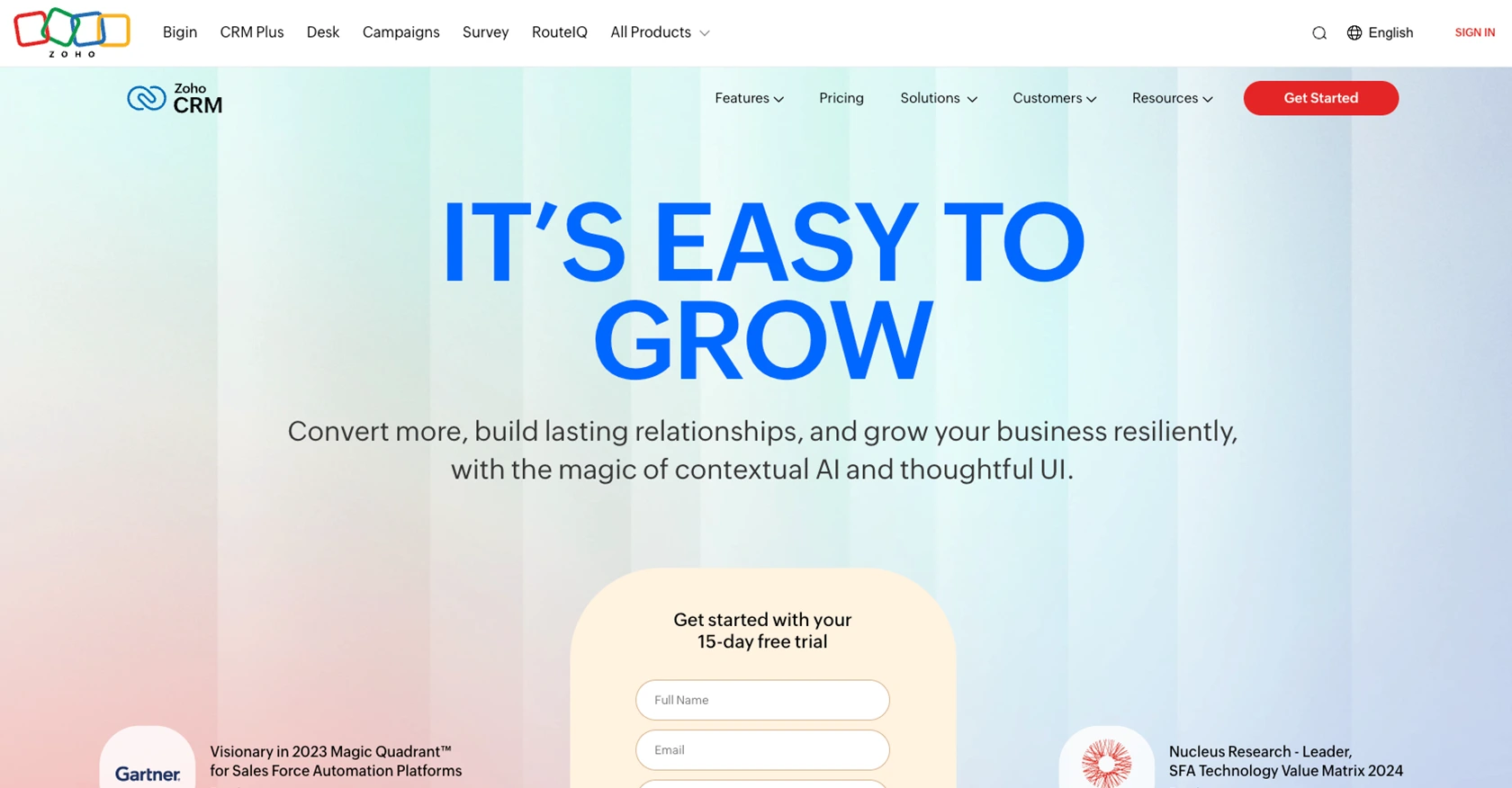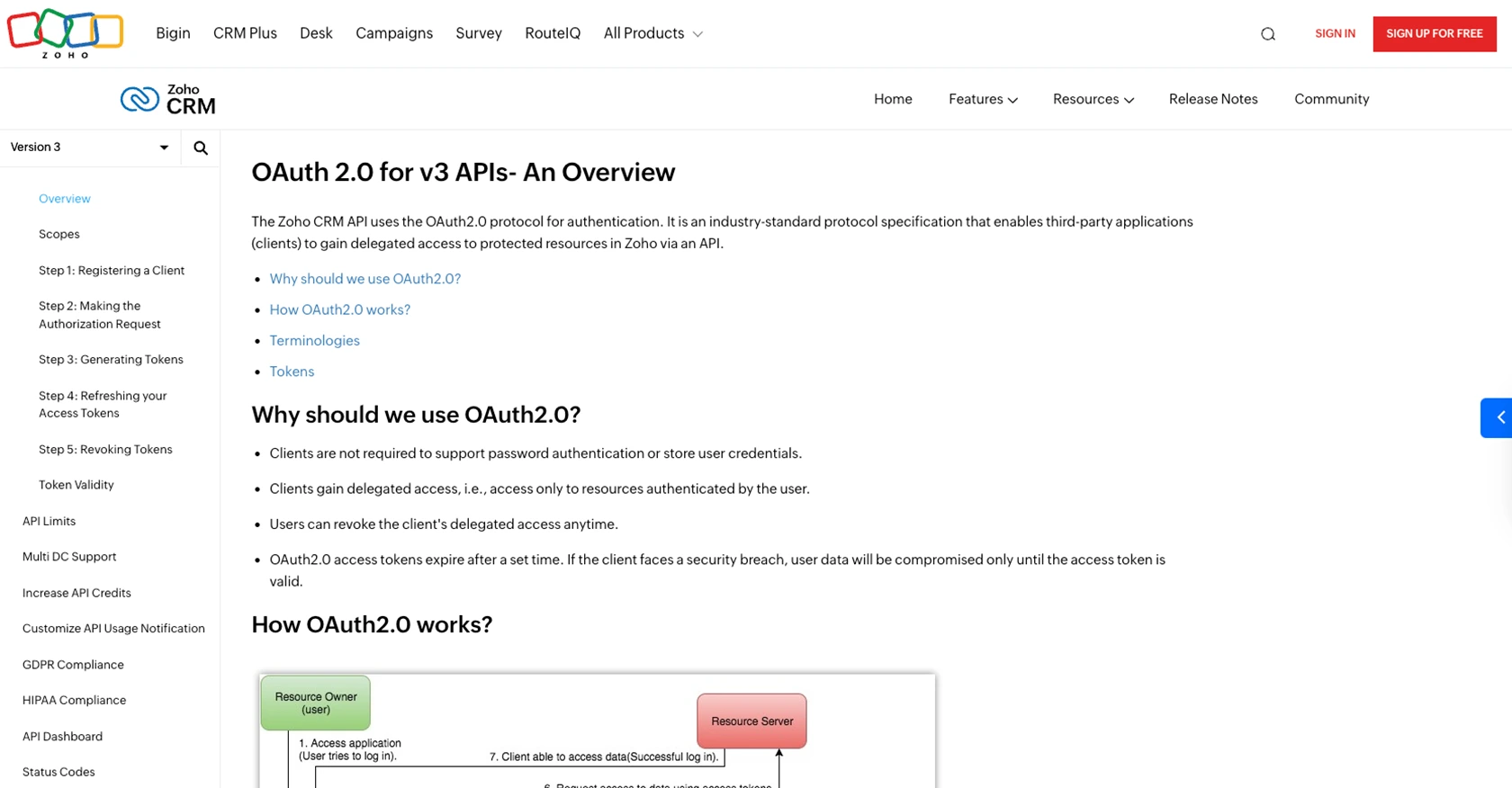Using the Zoho CRM API to Get Contacts in Python

Introduction to Zoho CRM
Zoho CRM is a comprehensive customer relationship management platform that empowers businesses to manage their sales, marketing, and support in a unified system. Known for its flexibility and scalability, Zoho CRM offers a wide array of features that cater to businesses of all sizes, from small startups to large enterprises.
Developers often integrate with Zoho CRM to enhance their applications by accessing and managing customer data efficiently. For example, using the Zoho CRM API, a developer can retrieve contact information to synchronize with other business tools, ensuring seamless data flow and improved customer interactions.
This article will guide you through the process of using Python to interact with the Zoho CRM API, specifically focusing on retrieving contacts. By following this tutorial, you'll learn how to set up your environment, authenticate with Zoho CRM, and execute API calls to manage your contact data effectively.
Setting Up Your Zoho CRM Test/Sandbox Account
Create a Zoho CRM Developer Account
To begin integrating with the Zoho CRM API, you'll need to set up a developer account. Follow these steps to create your account:
- Visit the Zoho Developer Console.
- Sign up for a free developer account if you don't already have one.
- Log in to your account to access the developer dashboard.
Register Your Application in Zoho CRM
Once your developer account is ready, you need to register your application to obtain the necessary credentials for OAuth authentication:
- Navigate to the "API Console" section in the Zoho Developer Console.
- Click on "Add Client" and choose the client type that suits your application (e.g., Web Based).
- Fill in the required details such as Client Name, Homepage URL, and Authorized Redirect URIs.
- Click "Create" to generate your Client ID and Client Secret.
Note: If you don't have a domain name or redirect URI, you can use dummy values for testing purposes.
Configure OAuth Scopes for Zoho CRM API
To interact with the Zoho CRM API, you need to define the scopes that your application will use:
- Go to the "Scopes" section in the API Console.
- Select the necessary scopes for accessing contacts, such as
ZohoCRM.modules.contacts.READ. - Ensure that the selected scopes align with the operations you intend to perform.
Generate OAuth Tokens for Zoho CRM API Access
With your application registered and scopes configured, you can now generate OAuth tokens:
- Direct users to the Zoho authorization URL to obtain an authorization code.
- Exchange the authorization code for an access token and refresh token using the Zoho token endpoint.
- Store these tokens securely for future API requests.
Refer to the Zoho CRM OAuth documentation for detailed steps on token generation and management.

sbb-itb-96038d7
Making API Calls to Retrieve Contacts from Zoho CRM Using Python
Python is a versatile programming language that is widely used for web development, data analysis, and automation. In this section, we will walk through the process of using Python to interact with the Zoho CRM API to retrieve contact information. This involves setting up your Python environment, installing necessary dependencies, and executing API calls.
Setting Up Your Python Environment for Zoho CRM API Integration
Before making API calls, ensure that your Python environment is properly configured:
- Install Python 3.11.1 or later. You can download it from the official Python website.
- Ensure that pip, the Python package installer, is installed on your system.
- Use pip to install the
requestslibrary, which is essential for making HTTP requests:
pip install requestsExecuting Zoho CRM API Calls to Retrieve Contacts
With your environment set up, you can now proceed to make API calls to Zoho CRM. Follow these steps to retrieve contacts:
- Create a new Python file named
get_zoho_contacts.pyand open it in your preferred code editor. - Add the following code to the file:
import requests
# Define the API endpoint and headers
endpoint = "https://www.zohoapis.com/crm/v3/Contacts"
headers = {
"Authorization": "Zoho-oauthtoken Your_Access_Token"
}
# Make a GET request to the API
response = requests.get(endpoint, headers=headers)
# Parse the JSON data from the response
data = response.json()
# Loop through the contacts and print their information
for contact in data.get("data", []):
print(contact)Replace Your_Access_Token with the access token you obtained during the OAuth authentication process.
Running the Python Script to Fetch Contacts from Zoho CRM
To execute the script and retrieve contacts, run the following command in your terminal or command prompt:
python get_zoho_contacts.pyUpon successful execution, you should see the contact details printed in the console. This confirms that your API call to Zoho CRM was successful.
Handling Errors and Verifying API Call Success
It's important to handle potential errors when making API calls. Check the response status code to ensure the request was successful:
if response.status_code == 200:
print("Contacts retrieved successfully.")
else:
print(f"Failed to retrieve contacts. Status code: {response.status_code}")Refer to the Zoho CRM status codes documentation for more details on handling specific error codes.

Conclusion and Best Practices for Zoho CRM API Integration
Integrating with the Zoho CRM API using Python provides developers with a powerful tool to manage and synchronize contact data efficiently. By following the steps outlined in this guide, you can set up your environment, authenticate using OAuth, and retrieve contacts seamlessly.
Best Practices for Secure and Efficient Zoho CRM API Usage
- Secure Token Storage: Always store your OAuth tokens securely. Avoid exposing them in public repositories or client-side code to prevent unauthorized access.
- Handle Rate Limits: Be mindful of Zoho CRM's API rate limits. Implement logic to handle rate limiting gracefully, ensuring your application remains compliant with Zoho's usage policies. Refer to the API limits documentation for more details.
- Error Handling: Implement robust error handling to manage API call failures. Use status codes and error messages to diagnose and resolve issues effectively.
- Data Standardization: Ensure that data retrieved from Zoho CRM is standardized and transformed as needed to maintain consistency across your applications.
Streamline Your Integration Process with Endgrate
While integrating with Zoho CRM can significantly enhance your application's capabilities, managing multiple integrations can be time-consuming. Endgrate simplifies this process by offering a unified API endpoint that connects to various platforms, including Zoho CRM. This allows you to focus on your core product while Endgrate handles the complexities of integration.
Explore how Endgrate can save you time and resources by visiting Endgrate's website. Leverage an intuitive integration experience to deliver seamless functionality to your customers.
Read More
- https://endgrate.com/provider/zohocrm
- https://www.zoho.com/crm/developer/docs/api/v3/oauth-overview.html
- https://www.zoho.com/crm/developer/docs/api/v3/scopes.html
- https://www.zoho.com/crm/developer/docs/api/v3/register-client.html
- https://www.zoho.com/crm/developer/docs/api/v3/api-limits.html
- https://www.zoho.com/crm/developer/docs/api/v3/status-codes.html
- https://www.zoho.com/crm/developer/docs/api/v3/field-meta.html
- https://www.zoho.com/crm/developer/docs/api/v3/get-records.html
Ready to get started?
